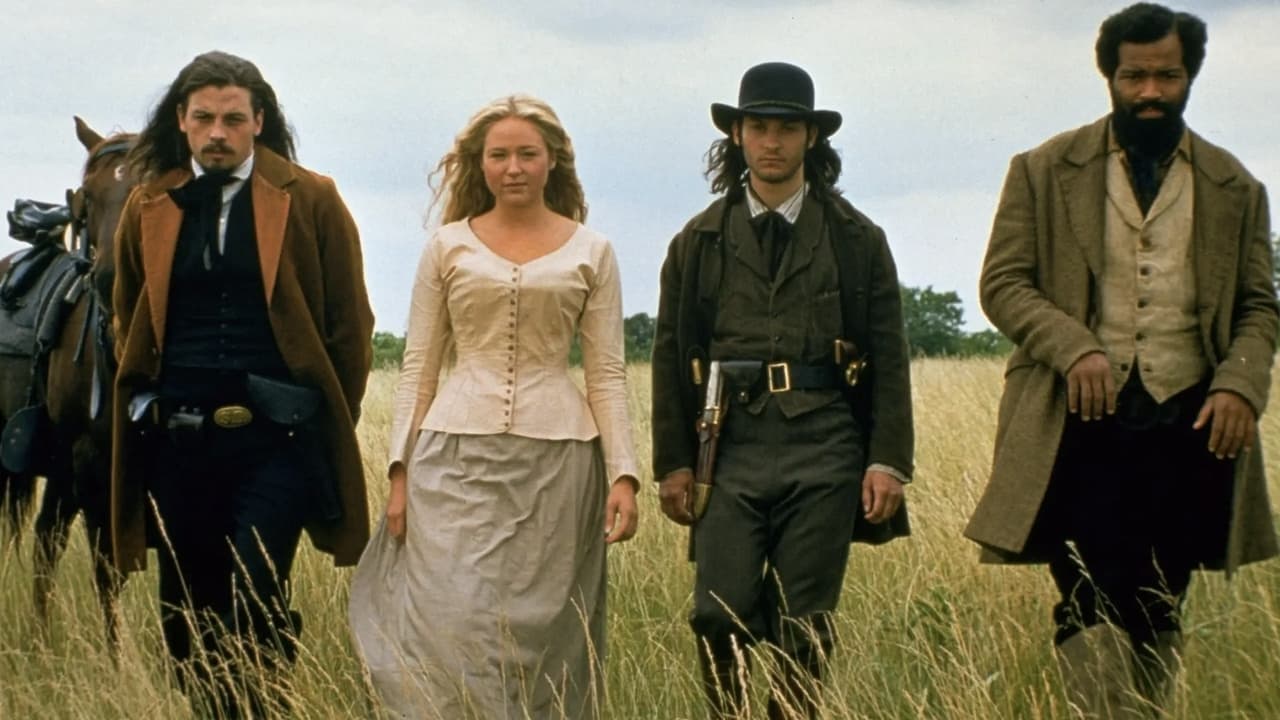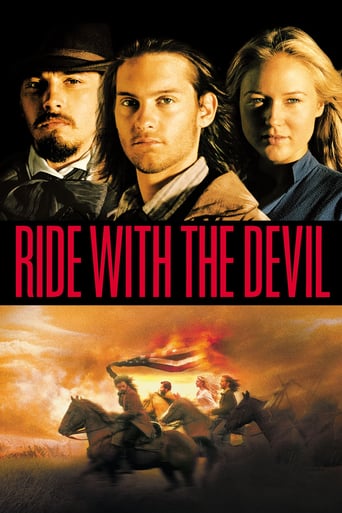

Harrowing epic about a little known band of civil war fighter known as the "bushwhackers" who used guerrilla warfare to destroy Yankee targets. It follows Jake Roedel and Jack Bull Chiles who are friends in Missouri when the Civil War starts. When Jack's dad is killed by Union soldiers the young men join the Bushwhackers, irregulars loyal to the South.I liked this quite a bit, a part of American history that I knew nothing about. Episodic in its telling, I felt that this told the true story, as there weren't any real heroes here.Excellent battle scenes filled with hundreds of extras and great horse stunts. Well acted too with a huge (mostly unrecognizable) cast due to all the wigs and period costumes. Tobey Maguire is really good as is Jonathon Rhys Meyers, whose wild, long haired character stole every scene he was in. The romance was okay, overall it did waffle in parts, with long sections of character development followed by another legendary, bloody battle. Not many left alive by the end but I liked how this played out. 5/11/14
... View MoreI've seen this movie several times. I've read a few books about William Quantrill, so the movie interested me. And while Quantrill's character is a small part of the movie, I thought it was a very good period piece filled with rich dialog that seemed to be of the time. The friendship between the characters Tobey Maguire and Skeet Ulrich play cements the story. This is the first movie I saw Jeffrey Wright in, and his performance as the willfully loyal Holt is first-rate, probably the best acting in the movie. My favorite scene is at the end of the movie when Jake Roedel and Holt part ways. It's a bittersweet moment that didn't much dialog.
... View MoreThis is not a typical Civil War Film and is quite a different look behind the lines. It is refreshingly absent all those "toy soldiers" lining up across a field and slaughtering each other with reluctant glee. This is more about character, tradition, changing paradigms, and cultural considerations.It is part action and part History and part Sociology, combining to tell real-life events intruding on real-life Families caught in the midst of this insanity. The Movie has a scriptural charm of past dialects and speech patterns delivered by Actors ranging from competent to excellent performances. It is up to Tobey Maguire to carry this and he is more than capable despite his limited physical stature and less than resonant voice. But mostly his eyes and effortless posturing are pleasingly possessive.The Film also benefits from a smooth, lack of flamboyance, and keen eye from the Director and together with the Screenplay and fine Cinematography this is a welcome entry in an overloaded Movie cannon that has dealt with this struggle with inconsistent frequency. But not like this.
... View MoreRide With the Devil is an intelligent film that follows more the way a great novel would, rather than a shoot'em'up blockbuster. That means total attention to detail, realistic dialogue and characterisation that makes one understand these people who are on the run for their lives.We've all known that Ang Lee could direct, for most that would start with his 'Sense & Sensibility', which shocked an awful lot of people, for a Taiwanese to turn in such a great film, his first film In English and about that elitist of film genres - the English period drama. For some of us others, who've tried to check out his earlier stuff, there's his excellent 'The Wedding Banquet'. I've yet to find a region 2 copy of his 'Eat Drink, Man Woman', though, unfortunately.After 'Ride With...' many many more found his favour with 'The Ice Storm' and then legions more with 'Crouching Tiger, Hidden Dragon'.Anyways, 'Ride With the Devil' will always find more favour with the Sunday evening older population than the popcorn brigade as the film goes at its own pace, not ours. It's not hard to keep up with the measured pace but does require some concentration. For those that do can be rewarded with a textured story of depth, that is also beautifully filmed and well acted. There are no special effects, CGI or tricks of any kind. A rousing score by Mychael Danna adds musical dynamism.Old fashioned?, well, yes, but this is history and that in the hands of Ang Lee does not mean boring. An underrated film.
... View More